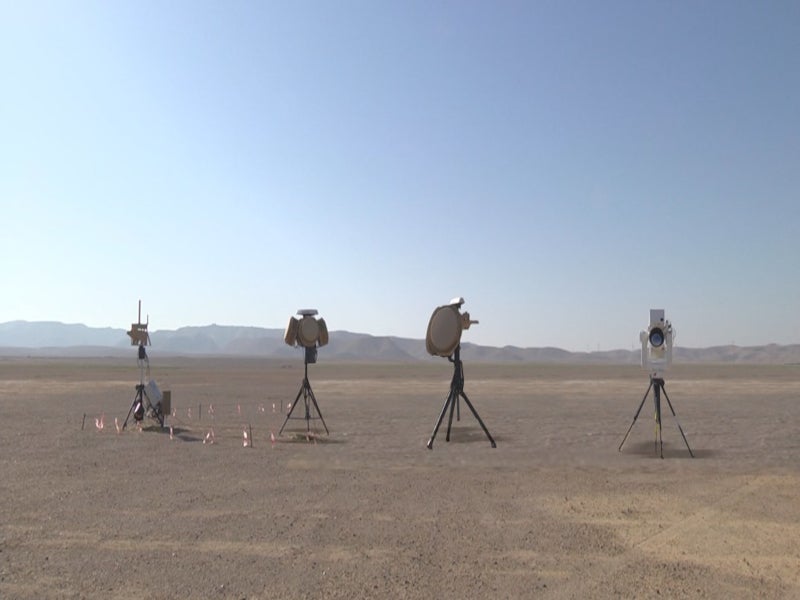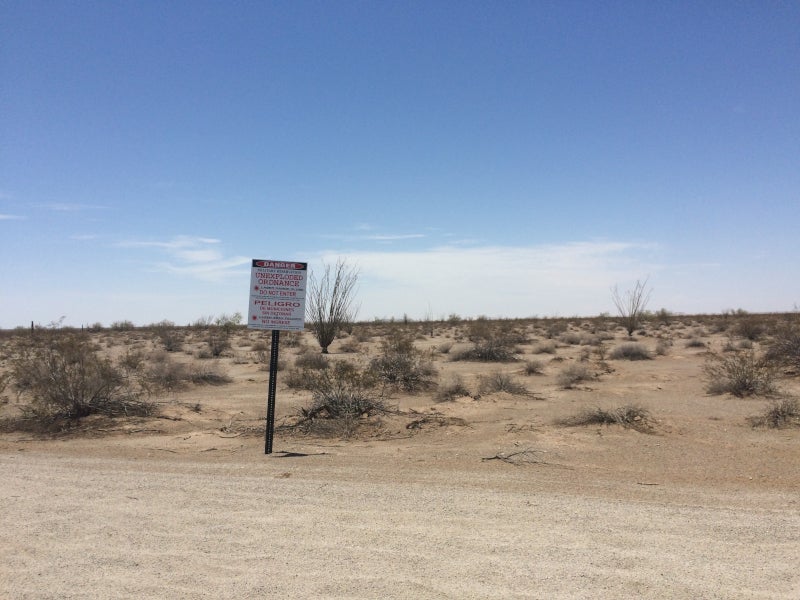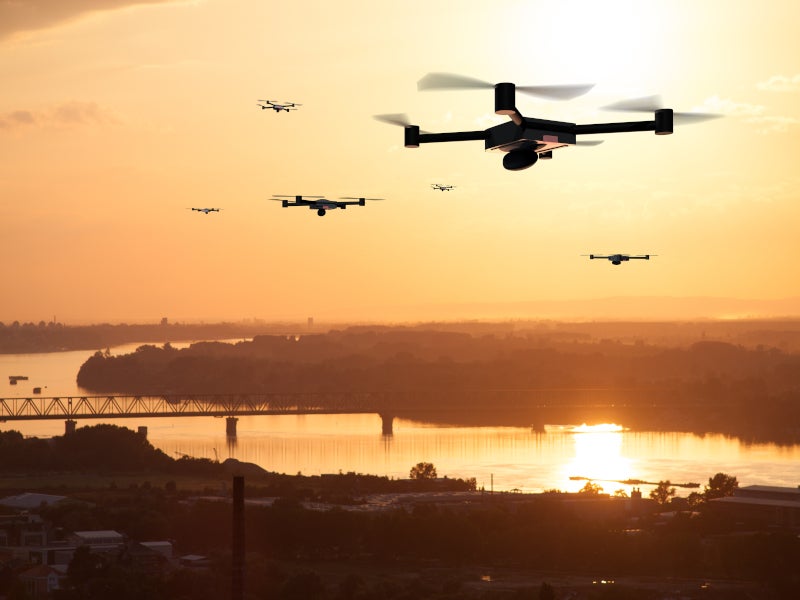Drone Dome™ is a counter-uncrewed aerial system (C-UAS) developed by Rafael Advanced Defense Systems, an Israeli defence company, for military and civilian applications. The system accurately detects, tracks, and neutralises hostile drones to provide a secure airspace.
Unveiled in 2016, the Drone Dome system is part of Rafael’s family of air and missile defence systems, which also includes the Iron Dome air defence system.
It is operated by the British Army and deployed in multiple operational scenarios. The anti-drone system was deployed by the UK Ministry of Defence (MoD) during the G7 Summit in Cornwall, England, to provide protection against uncrewed aerial threats in September 2021.
Drone Dome demonstration and testing
The Drone Dome proved its C-UAS capabilities in a series of demonstrations conducted at the US Army’s Yuma Proving Ground, Arizona, in April 2022.
The demonstrations tested the system’s accurate detection, identification, and soft-kill capabilities against a variety of drone targets.
The US Department of Defense’s (DoD) Joint Counter-small Unmanned Aircraft Systems (C-sUAS) Office (JCO) recommended the anti-drone system for future C-sUAS as a service (CaaS) contract opportunities in November 2022, following the successful demonstrations.
Drone Dome system design and features
Drone Dome is an innovative, combat-proven counter-drone system designed to detect, track, and neutralise hostile drones, one of the fastest growing threats that pose serious security concerns to military and civilian sites. It can be operated in all weather conditions and provides 360° coverage.
Operated by a single user, the fully modular system can be deployed as a mobile or stationary unit and can be customised according to the customer’s request.
Drone Dome’s open architecture allows it to be integrated with multiple effectors and sensors. It is designed to detect targets as small as 0.002m² at a range of 3.5km using charge-coupled device/infrared (CCD/IR) automatic video motion detection (VMD) and automatic target recognition (ATR).
The system can destroy targets with minimal collateral damage to the surrounding environment, and maximum safety for friendly aircraft.
Furthermore, the C-UAS system is equipped with artificial intelligence technology to provide an accurate picture of incoming threats, enabling faster and more efficient detection, identification, engagement, and neutralisation of the target.
Drone Dome command and control
Drone Dome is operated from a command, control, communications, computers, and intelligence (C4I) centre, which integrates data received from multiple sensors to provide a unified air situational picture. The centre features open architecture, an advanced graphical user interface (GUI), and countermeasure activation capabilities.
The C4I centre incorporates unique automatic target prioritisation algorithms and equipment to enable command and control of all the subsystems of the C-UAS.
Drone Dome mechanism
A 360° radar and a radiofrequency (RF) sensor provide detection and accurate positioning of the target. The C-UAS system then provides either a soft-kill or hard-kill capability.
In the soft-kill mode, the system detects the drone’s location by its RF signature. It uses reactive jamming technology to block very high frequency (VHF) and ultra-high frequency (UHF) channels, including global navigation satellite system (GNSS), to destabilise the enemy drone. The C-Guard RD electronic jammer blocks the signal and commands from the remote control to the drone and video transmitted by the drone to its operator. It provides jamming capabilities against multiple targets.
In the hard-kill mode, the C4I system sends the target position to the laser director, which allocates it to the laser effector. The effector locks and tracks the target and emits a laser beam within seconds to destroy the target.
The Lite Beam high-power laser can be used to intercept multiple drones including manoeuvring targets. It uses an integrated beam director that is mounted on the stabilised pan and tilt gimbal.
Sensors and radars
The Drone Dome system has up to four RADA Electronic Industries’ (RADA) RPS-42 MHR S-band frequency multi-mission hemispheric radars (MHR) to provide full 360° azimuth coverage and 90° elevation. The MHR has built-in ethernet connectivity and more than 15,500 hours of calculated mean time between failures (MTBF). It can track multiple targets in all weather conditions.
The C-UAS is equipped with Netline’s NetSense wideband detection sensor systems.
The communications intelligence and direction finding (COMMINT/DF) RF sensor has a receiver range from 70MHz to 6GHz, a high dynamic range of more than 60dB, high sensitivity with noise figure (NF) of less than 10dB, and switching capabilities.
The Drone Dome system consists of Controp Precision Technologies’ Speed ER electro-optical/infrared (EO/IR) sensor installed on a gimbaled tripod. The sensor includes a detection unit and a video-on-demand feature for processing video. It also has a system manager and other backend elements for controlling video, data, status, and commands.
Speed ER offers video motion detection for the automatic detection of low contrast moving targets while the EO video tracking enables automatic tracking of multiple targets. The sensor features ATR and a multi-sensor system, which allows for the integration, operation, and display of various EO sensors.
Orders and deliveries
Rafael, together with its partner RADA Electronic Industries (RADA), won a tender published by the UK Ministry of Defence to supply the Drone Dome C-UAS integrated with RADA’s multi-mission hemispheric radars (MHR) in August 2018.
The British Army uses the Drone Dome systems to protect sensitive facilities and sites, on which armed forces are deployed, from hostile airborne drones.






